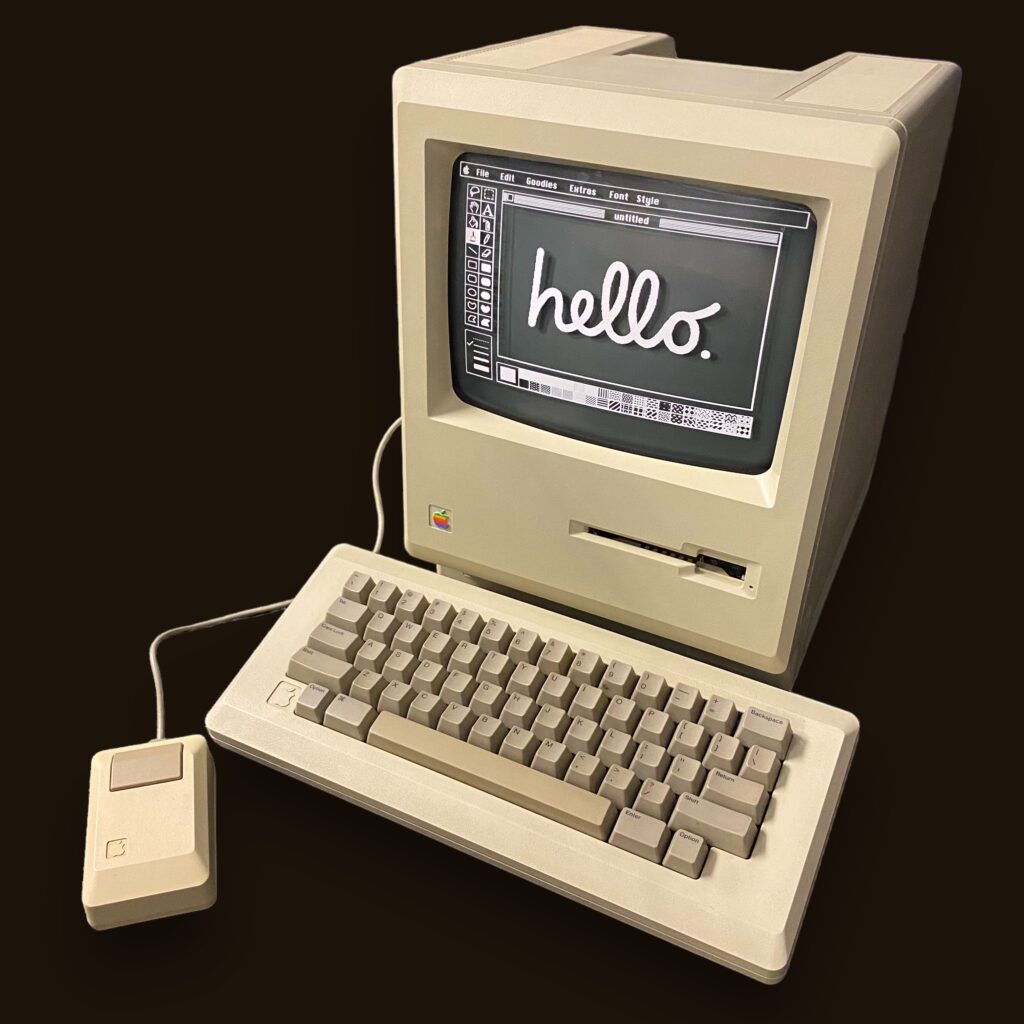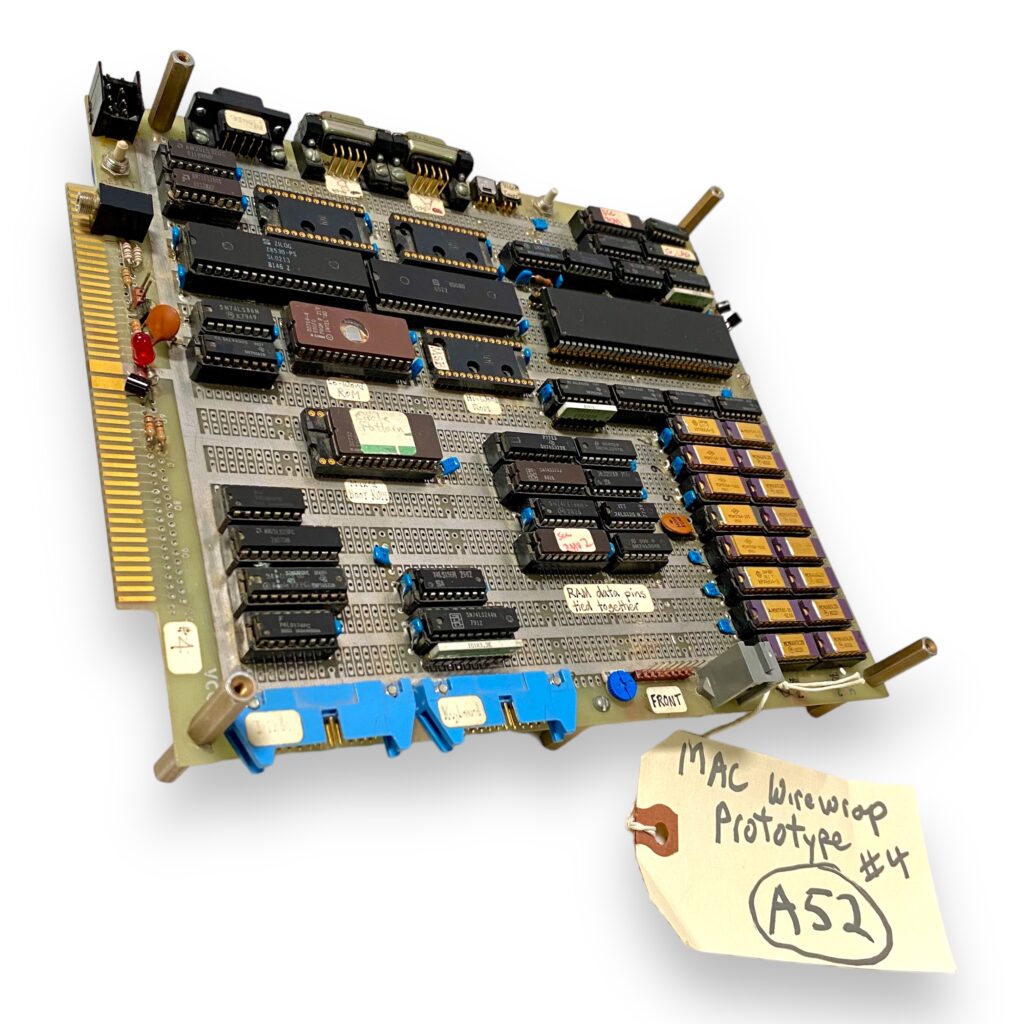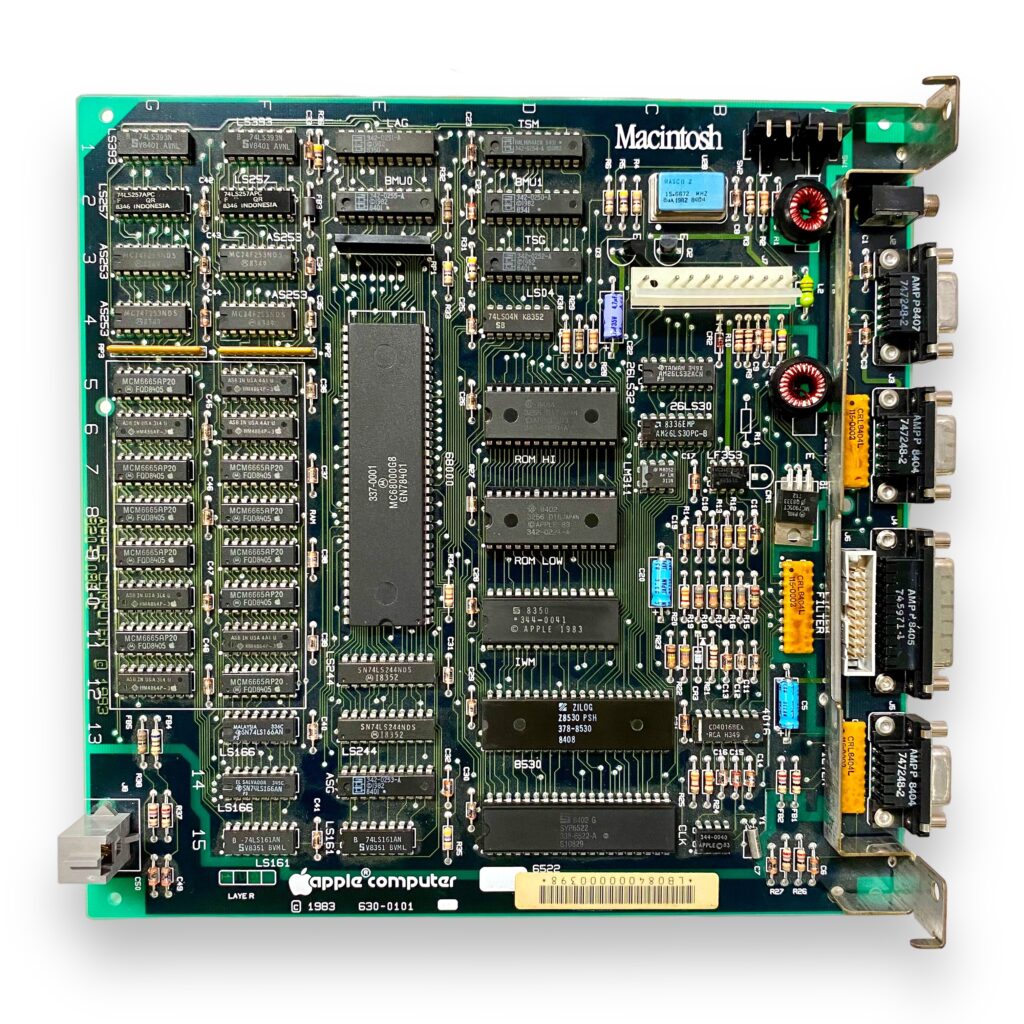
On January 24, 1984, Apple Computer launched its new Macintosh computer in a Super Bowl ad that aired only once. Alluding to George Orwell's novel 1984, it both impressed and bewildered the millions who viewed it. Directed by Ridley Scott, the ad symbolized Apple's desire to “rescue” humanity from the conformity of computer industry giant IBM. It was a call for “a computer for the rest of us.”
In a market dominated by the IBM PC, most computer users were struggling to learn tricky commands and special keywords to run their software. But Mac users could just “point and click.” The Mac used a graphical user interface and a mouse—both new features on mass market computers.

The Macintosh with graphical user interface, keyboard, and mouse.
Even with its splashy introduction and its breakthroughs in usability and design, however, the Mac started slowly in the marketplace and sales were modest in the first year. Moreover, Steve Jobs’ intense personality, drive for perfection, and difficult management style frequently clashed with others at Apple, and in 1985, he suffered the same fate as many Silicon Valley founders when he was fired by the board of directors. Jobs’ departure marked the end of an era and the beginning of a ten-year period of massive hits and equally big misses for him outside of Apple.
Over the years, Apple has continued to cultivate an “outsider” image with campaigns that portray Mac users as rebels, and the Mac’s hardware and software changed many times since 1984. Apple's way of combining elegant industrial design, brilliant marketing, and advanced engineering remain its core values, expressed in everything it makes. The company consistently ranks in first place of all global brands.
The celebration of the Apple Macintosh's 40th anniversary is not merely a retrospective glance at a piece of technology; it's a reflection on how a single innovation, introduced at the crossroads of design and functionality, has rippled through time, shaping the way we interact with and perceive computing.
CHM has curated a unique array of Apple Macintosh artifacts, both from the Museum’s collection and on loan from Apple alums. The temporary retrospective mini pop-up showcases the technological achievements, the team behind them, the cultural influences that shaped the brand, and a few more surprises.
The evolution of Macintosh hardware began with wire-wrap prototypes built in the early 1980s by Apple employees Dan Kottke and Brian Howard. As the design changed throughout the development process, new versions were made. Shown here is Prototype #4.

Macintosh Wire-wrap Prototype #4, Apple Computer, Inc., 1981, Gift of Andy Hertzfeld, catalog number 102638251.
Once the hardware was finalized using wire-wrap, a printed circuit board was designed by team member Colette Askeland for mass production. This board was very compact, allowing for the Mac’s highly portable “all-in-one" packaging. To make a complete Macintosh system, a screen, floppy disk, keyboard, mouse, and power supply were added.

Macintosh Main Logic Board, Apple Computer, Inc., 1984, Gift of Henri Socha, catalog number 102667053.
A marketer's dream, Apple’s loyal customers feel a strong emotional connection with the company, transforming them from customers into promoters. Beyond regularly buying new Apple products, Apple fans have shown their affection for the Mac in many different—and sometimes oddball—ways: Mac tattoos, a “MacQuarium,” Apple logo haircuts, paper Macs, Mac-inspired music, and more.

“What is love?,” Mac the Rapper, performed by the Apple Macintosh, Shinola Records, 1987, catalog number 102651542. You can listen to it here.
One last thing. For the very first public showing of the Macintosh, Steve Jobs, Steve Wozniak and the leaders of the Macintosh design team came to Boston on January 30, 1984, to put on a spectacular show with 1,200 Boston Computer Society members in attendance, then the largest personal computer user organization in the country with 32,000 members in all 50 states and 57 countries. The BCS general meeting recordings are now part of the CHM collection. To watch the first public showing of the Macintosh video see "The Very First ‘Stevenote’."
We hope to see you at CHM for our Apple Mac at 40 mini pop-up, closing February 25, 2024. Get your ticket now!
If you can't make it in person, check out the online pop-up.